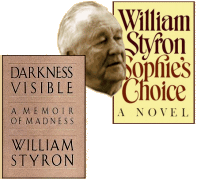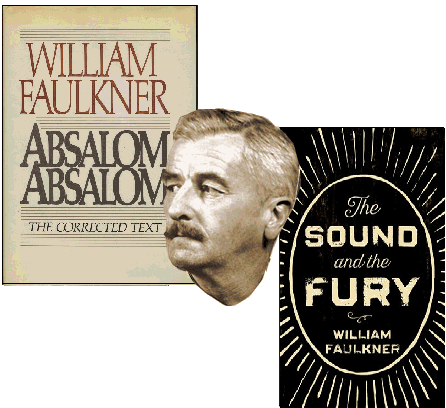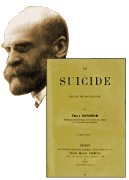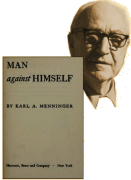 My sister, an academic, wrote a paper long ago analyzing Shakespeare’s Hamlet using double-bind theory. I think I would’ve thought it brilliant even if we didn’t share a name and a history. She showed how Hamlet’s soliloquy on suicide applied to all of the characters, each of whom was in a double bind, and how madness and suicide were tempting solutions to the impossible situations each of them faced. I can’t count the number of suicidal patients I’ve seen where parsing the double binds they were experiencing was the key to finding their way out of a suicidal dilemma. I owe both Shakespeare and my kid sister for that insight.
My sister, an academic, wrote a paper long ago analyzing Shakespeare’s Hamlet using double-bind theory. I think I would’ve thought it brilliant even if we didn’t share a name and a history. She showed how Hamlet’s soliloquy on suicide applied to all of the characters, each of whom was in a double bind, and how madness and suicide were tempting solutions to the impossible situations each of them faced. I can’t count the number of suicidal patients I’ve seen where parsing the double binds they were experiencing was the key to finding their way out of a suicidal dilemma. I owe both Shakespeare and my kid sister for that insight.
 Another great writer who made a major contribution was William Styron, the author of Sophie’s Choice, another variation on the theme of double binds, impossible situations. It’s a must-read book and a must-see movie if you are someone who sees suicidal patients. One will never find two better teachers than William Styron and Meryl Streep. And Styron gave us something else. His Darkness Visible is a first hand account of the pain of Melancholia that makes the why of the suicidal risk in the afflicted patients unforgettable. Another must-read.
Another great writer who made a major contribution was William Styron, the author of Sophie’s Choice, another variation on the theme of double binds, impossible situations. It’s a must-read book and a must-see movie if you are someone who sees suicidal patients. One will never find two better teachers than William Styron and Meryl Streep. And Styron gave us something else. His Darkness Visible is a first hand account of the pain of Melancholia that makes the why of the suicidal risk in the afflicted patients unforgettable. Another must-read.
 And speaking of the great writers, Virginia Woolf and her Mrs. Dallaway are in close contention with the next paragraph’s featured author as the best piece of fiction ever written. The book is, in part, about her character, Septimus, a man with a War Neurosis who kills himself to avoid being committed. Some 16 years after writing the book, Woolf herself committed suicide as an episode of her periodic psychotic illness was coming on – likely for the same reason. I have three books on my shelf, each explaining her illness convincingly, each with a different diagnosis [Schizophrenia, Bipolar Disorder, and PTSD]. I can’t summarize her themes – but they’re all there.
And speaking of the great writers, Virginia Woolf and her Mrs. Dallaway are in close contention with the next paragraph’s featured author as the best piece of fiction ever written. The book is, in part, about her character, Septimus, a man with a War Neurosis who kills himself to avoid being committed. Some 16 years after writing the book, Woolf herself committed suicide as an episode of her periodic psychotic illness was coming on – likely for the same reason. I have three books on my shelf, each explaining her illness convincingly, each with a different diagnosis [Schizophrenia, Bipolar Disorder, and PTSD]. I can’t summarize her themes – but they’re all there.
 William Faulkner is the other contender for the greatest piece of fiction ever written [personal opinion]. It’s two books: Absolom, Absolom and The Sound and the Fury. The books explore the interplay of culture, history, myth, and personal biography as they lead his character Quentin to suicide. I expect that my own history as a Southerner has something to do with my reverence for these two books. But even with that COI declaration, their complex messages have frequently come to mind with suicidal patients and opened up fruitful avenues for exploration.
William Faulkner is the other contender for the greatest piece of fiction ever written [personal opinion]. It’s two books: Absolom, Absolom and The Sound and the Fury. The books explore the interplay of culture, history, myth, and personal biography as they lead his character Quentin to suicide. I expect that my own history as a Southerner has something to do with my reverence for these two books. But even with that COI declaration, their complex messages have frequently come to mind with suicidal patients and opened up fruitful avenues for exploration.
 While countless academics and graduate students have had their way with Émile Durkheim’s 1897 Treatise, Suicide, his insights have weathered the century. His study compared suicides among Catholics and Protestants using a scientific method. "Overall, Durkheim treated suicide as a social fact, explaining variations in its rate on a macro level, considering society-scale phenomena such as lack of connections between people [group attachment] and lack of regulations of behavior, rather than individuals’ feelings and motivations." Wikipedia. It’s a piece of Sociology important to consider at the individual level with suicidal patients..
While countless academics and graduate students have had their way with Émile Durkheim’s 1897 Treatise, Suicide, his insights have weathered the century. His study compared suicides among Catholics and Protestants using a scientific method. "Overall, Durkheim treated suicide as a social fact, explaining variations in its rate on a macro level, considering society-scale phenomena such as lack of connections between people [group attachment] and lack of regulations of behavior, rather than individuals’ feelings and motivations." Wikipedia. It’s a piece of Sociology important to consider at the individual level with suicidal patients..
 We all likely know about Karl Abraham’s and Sigmund Freud’s thoughts about the relationship of anger to depression and suicide. But Karl Meninger‘s 1938 contributions in Man Against Himself are what actually come to mind with every suicidal person I’ve ever seen. Paraphrased, suicidal people want to die [escape], to be dead [relief], and to kill [rage] – and I try to find the personal version of each one of them in every interview. This is a timeless book that isn’t often mentioned these days, but it should be. I had to occasion to reread it a few years ago along with a student, and it was as fresh and useful as it was the first time I read it.
We all likely know about Karl Abraham’s and Sigmund Freud’s thoughts about the relationship of anger to depression and suicide. But Karl Meninger‘s 1938 contributions in Man Against Himself are what actually come to mind with every suicidal person I’ve ever seen. Paraphrased, suicidal people want to die [escape], to be dead [relief], and to kill [rage] – and I try to find the personal version of each one of them in every interview. This is a timeless book that isn’t often mentioned these days, but it should be. I had to occasion to reread it a few years ago along with a student, and it was as fresh and useful as it was the first time I read it.
 Albert Camus’ Myth of Sisyphus is a classic on many fronts. While the philosophical point is that Hamlet’s existential dilemma has to be resolved to truly live authentically, to choose to live, I found it helpful with any number of patients. Concretely, I had cases who had a lethal cache of medications as a beloved possession, a talisman, a way of holding out, a way of not fully stepping into life until life proved itself. And there were a significant number who kept their cache secret until they decided to throw them away and step into life after all. That’s a whole psychotherapy topic of its own, but for the moment, suffice it to say that Camus is definitely a required read.
Albert Camus’ Myth of Sisyphus is a classic on many fronts. While the philosophical point is that Hamlet’s existential dilemma has to be resolved to truly live authentically, to choose to live, I found it helpful with any number of patients. Concretely, I had cases who had a lethal cache of medications as a beloved possession, a talisman, a way of holding out, a way of not fully stepping into life until life proved itself. And there were a significant number who kept their cache secret until they decided to throw them away and step into life after all. That’s a whole psychotherapy topic of its own, but for the moment, suffice it to say that Camus is definitely a required read.

For what it’s worth, I hated, hated Styron’s Darkness Visible. When I read it a few years ago, Styron seemed singularly unreflective on his own life and firmly invested in the disease model of depression. Too much Prozac-era “chemical imbalance” thinking for my taste, and I think he helped spread our contemporary drug-centric approach:
Author as neurochemical self. I don’t doubt that such a perspective helps people feel like their suffering is more legitimate because now it’s a “real disease”, but I think a perspective of biochemical causality makes for both bad literature and a dangerously myopic view of human suffering.
Woolf and Hamlet are undeniably brilliant though, and you’ve reminded me I oughta read Faulkner one of these days. Great post.
Point taken. It was his description that stuck with me..
.
It’s important to include the feature of melancholia FOR SOME that the psychological/existential torment is driven by a process that may not be enable to interpersonal/philosophical/verbal/lived resolution of that torment. Although I have to admit that reading Styron’s book had a strong influence in my viewing what he described as distinct from “depression” rather than being on a continuum merely distinguished by severity. And did reinforce a sense that for some with melancholia then other tools (imperfect though they are) are critically important. I think Styron conceded that such experiences made for bad literature. I don’t recall Styron attempting to account for all (or the majority) of human suffering as melancholia but it’s been many years since I read the book. I found myself having more qualms with The Noonday Demon.
A lot seems to hinge on those 4 words in the quote: “in its extreme form”
Remove those words, as it feels like so many do when speaking of “depression”, and much changes.
.
In the end, similar to 1bom, it was Styron’s attempt to use words to simultaneously convey an experience, and the inherently ineffable nature of that experience (even for the person who had experienced it), that really stuck with me.
.
One other reflection: “Author as neurochemical self. I don’t doubt that such a perspective helps people feel like their suffering is more legitimate because now it’s a “real disease”….” I would agree that for some of Styron’s readers this may be an apt description. The idea that if something is more real, more valid, if it involves “the brain” is rampant (e.g., http://blogs.discovermagazine.com/neuroskeptic/2016/04/11/the-era-of-the-brain-hype/ for a recent take on this, though not so much from a medical perspective). However, it is very hard for me to believe after readings Styron’s description of personal experience, that Styron would have felt the need for a biochemical explanation to legitimize his experience. His personal experience just seemed too powerful to have required that.
Yeah, I did think Styron’s description of the subjective experience of depression was pretty accurate (though I do think it’s part of a continuum). It was just frustrating how much his understanding stayed within a biochemical interpretation. (apparently the book came from a lecture he gave at Johns Hopkins, which may account for the more clinical bits.) I’ve experienced depression myself, and oddly enough I felt like Styron’s work suffered from the same inability to see his own life clearly that I’d had at the time. Where were his friends, how did he feel about his life and himself? He wrote about depression as a terrible storm, but I don’t believe most cases simply happen randomly like bad weather. But perhaps there’s an inherent difficulty in conveying the subjective experience of depression and understanding any external influences at the same time, because it really does narrow your perception of the world.
Speaking of double-binds — Kafka makes for interesting reading too. I’m thinking especially of the paralysis that pervades works like The Metamorphosis and Before the Law.
“though I do think it’s part of a continuum”
There are clinicians for whom I have enormous respect who view it this way. I remain uncertain on this point.
.
“But perhaps there’s an inherent difficulty in conveying the subjective experience of depression and understanding any external influences at the same time, because it really does narrow your perception of the world.”
I need to ponder more on this, particularly given that Styron seemed to be trying to be as true as possible to the experience he had had during the depths of the melacholia, rather than reflecting on that experience through the lens of non-melancholic state. He seemed to be trying to covey to some extent an absence of the kind of meaning making that makes existence interesting/bearable for a writer?
.
Perhaps that narrative would have been better served if it had remained entirely ineffable, rather than introducing the biochemical discourse. How much that reflected Styron having found succor in medications, in ways not afforded him by other means, I don’t know. I didn’t know that the book had emerged from a talk he had given at Hopkins. Interesting. For some reason I didn’t feel a proselytizing in his book that I have sometimes felt reading other descriptions of melancholia. Though perhaps it does so subtly in the implication that it is an experience divorced from the other experiences of one’s life. The discrete nature, rather than the biochemical, is what stuck with me. The implication that the usual life lines won’t work, won’t impact. The question you raise of whether this reflects “the truth” of what can and can’t help in the depths of melancholia, or simply the perceived truth of the suffer is an interesting one. I lean towards there being at least some truth to the former, at least for some,
.
This discussion is a reminder to me that I should read more deeply about double binds. It’s interesting that Linehan, in her focus on trying to help those grappling in a chronic struggle with suicide, turned to dialectics to help navigate that struggle. I need to find the time to read the authors being discussed in this post and thread.
Kafka has always been a voice in the clouds for me in any number of contexts. I don’t know how I had missed his Letter to My Father for so long. I picked it up as a monograph on a trip to Prague from the little museum at his father’s house several years ago. I read it on the street outside, and finally felt I understood his paralysis [because I experienced it for the rest of the day].
1bom, do you have the reference for your sister’s article?
«I should read more deeply about double binds…»
I have to say that every minute I spent reading the “double bind” literature was repaid a thousand fold. It’s not in vogue and hard to locate these days, but worth a trip to the library for those musty books from bygone days. I can’t imagine getting anywhere with the patients we call Borderline without a thorough understanding of the concept. I once made up my own diagnostic criteria for that personality type, and one criteria was “Borderline patients create and attempt to maintain impossible situations” [impossible situations being another term for double binds]…
In addition to what you discussed above, anything you would particularly recommend reading in that DB literature? A corollary to that first question would be: anything in that literature that you would see as particularly relevant re children and young adults?
by Anna K. Nardo
Shakespeare Quarterly. 1983, 34[2]:181-199.
“However, it is very hard for me to believe after readings Styron’s description of personal experience, that Styron would have felt the need for a biochemical explanation to legitimize his experience.”
I’m not so sure. I do think the way the biochemical explanation deflects blame accounts for some of the popularity of Styron’s book, and I seem to recall him contrasting the common reproach toward people with depression with the biomedical perspective.
For example:
I think this is a fairly straightforward example of using equating depression to physical illness as a way to remove blame from suicide. I can imagine that must’ve been an incredible relief against the societal taboo and moral judgment back in 1990, but now that we’re firmly in the genes-and-brains camp the disease model has blinded us to any broader perspective.
“Perhaps that narrative would have been better served if it had remained entirely ineffable, rather than introducing the biochemical discourse.”
I think it would’ve, yes. I guess my view is that the duty of a writer is to illuminate human experience in human terms. He doesn’t have any particular expertise as a doctor, and whenever Styron dips into the clinical perspective I feel like he’s abandoning the greatest strength of literature. And — at least as far as my own experience is concerned, there is a kind of meaning in depression that Styron’s work dismisses. I fear this is embarrassingly poetic and mystical, but right at the edge, I remember having a perception and sensitivity to beauty I’d never experienced before. Simple things — blossoming trees, afternoon sunlight through a window… it’s what van Gogh was trying to capture with paint or what Septimus felt when Woolf writes,
Hints, almost, of a kind of pantheistic unity. When Styron describes being pierced by a passage of Brahms in the depths of his depression, I think he glimpsed the same, but only just — and then he turned away. Perhaps this is all nonsense, but as baffling as it sounds, I feel like I gained something from depression where Styron saw only suffering.
—
I have to say, this discussion is reminding me why the psychoanalytic tradition seems so much richer. Before mental illness was thoroughly medicalized, I think there was a much greater appreciation for what art and literature could offer our understanding of distress.
Mark, I would not concur (I don’t think) with a lot of what this author is saying, but does this also capture some of what you are articulating in this thread:
https://melbournelacanian.wordpress.com/2014/08/20/suicide-selfishness-and-illness/#more-150
1bom, Thanks. I can’t find the original work for free, but the reviews certainly make it sound interesting.
https://libres.uncg.edu/ir/uncg/f/C_Hodgkins_%5BReview%5DLudic_1993.pdf
She was certainly playful in her choices of chapter titles
http://www.sunypress.edu/p-1221-the-ludic-self-in-seventeenth-c.aspx
This blog from Dr. Mickey is a wonderful opener for a conversation about agency and understanding. When I touched on the topic of suicide here recently I used it to illustrate the idea of cognate disciplines. From sociology to psychopharmacology, each is valid and none contradicts the others. That idea carries over to our thinking about causation and agency as much as to therapeutic or preventive efforts. That creates a lot of space for variation – following Tolstoy we can say each unhappy suicide is unhappy in his own way. There are no standard formulas that account for all of them, and many will be blends. In particular, the very high rate of completed suicide in elderly males reflects a confluence of factors: access to firearms, health insecurity, financial insecurity, alcohol misuse, loss of social networks, loss of intimacy, and diminished prefrontal executive function. That’s another illustration of the Durkheim-to-biology principle, and there is no one predictable tipping point.
As always, context is everything. To pick up on the discussion in this thread about William Styron, it’s important for clinicians to recognize his term madness for what it is – a state change that’s qualitatively different from the existential struggles of stressed but still sane though damaged and double-bound individuals. In a severe melancholic depression, the appearance of delusional hopelessness and delusional guilt or other psychotic features signals an important state change. From a state of compensated equilibrium, with strained homeostatic adjustments, the patient enters a new state that we can call allostatic collapse. In that state, normal coping mechanisms fail and new pathology emerges – pathology that is alien to the past experience of the person. Some parallels from general medicine would be diabetic ketoacidosis and eclampsia of pregnancy. These are what I call tidal events, and in a good many at-risk patients with the right genes and the right past history those tidal events in psychiatry are outside the person’s control.
Once that systems collapse happens, then can we say it is helpful to speak of personal agency in severe melancholia? Was William Styron being “unreflective on his own life” when processing the experience after he achieved remission? He was plenty reflective enough to give us a brilliant description of his inner state. He understood that his madness was an alien state. So what if he bought in to the neurochemical narrative given to him by his physicians? If that can help to cement the therapeutic alliance then I would not be critical or dismissive. Parenthetically, that’s the usual reason for sharing such a narrative with patients. Personal agency is a next step – working with his clinicians on adherence to medications, supportive psychotherapy, risk education, family counseling, and coping strategies. To give a patient like William Styron the impression that somehow he was the agent of his episode of severe melancholic depression is not a recipe for success. For one thing, in some hands encouraging him to reflect on his own agency for the illness can convey a message that he must have been responsible – or at least that’s how he is likely to interpret it – which can trigger a return of guilt feelings and set the stage for a recurrence. When I worked in a tertiary level mood disorders program we found that most patients did best using a here-and-now approach to dealing with their illness rather than using a psychodynamic anamnesis.
Picking up with “…encouraging him to reflect on his own agency for the illness can convey a message that he must have been responsible – or at least that’s how he is likely to interpret it – which can trigger a return of guilt feelings and set the stage for a recurrence.” My experience has been that Melancholic patients are already fixated on their own agency, sometimes at a delusional level. They don’t just think they’ve done bad things, they think that they “are a bad thing” – a toxic presence. So they often see themselves as the agents of evil. And when they become suicidal, they can genuinely feel that the world needs to be rid of them. What they evoke in me is to try to get them off the hook, to deny their agency. It doesn’t work. Their self reviling is a “fixed false belief” [often a lethal delusion].
I don’t know the cause of Melancholia. But what I think I do know is that it is, indeed, a different “State.” The kinds of psychotherapeutic interventions that are useful in the symptomatic depressions just amplify the Melancholic’s sense of being a “bad thing.” That difference is striking to me. It’s not severity that defines Melancholia in my playbook, it’s the quality of the affect and the experience. I wouldn’t bet the farm on it, but I think you can almost feel the difference when you walk into the room. So while I certainly am as in the dark as everyone else about causation, I think of these patients as having a primary problem in affect modulation and see the things they say as an attempt to explain how they feel rather than the cause of the feelings. To me, it seems like an altogether different animal.
I would even suggest that the reason that Melancholic patients like Styron go for biological formulations is bigger than just following their doctors’ lead. Their depression feels physical [and who knows? they might be right about that]…